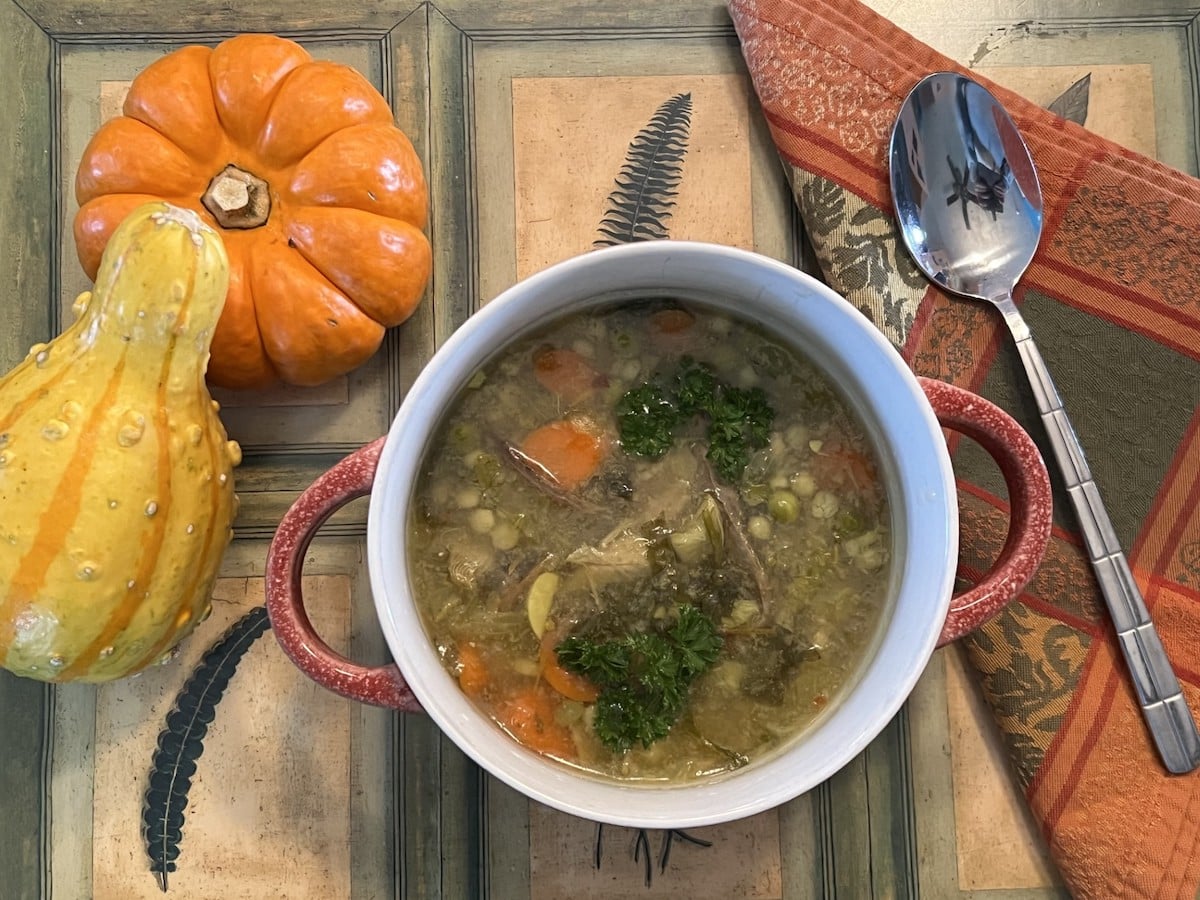
Share this post!
A Course In Nutrition: Learning Your A, B, C’s
Welcome back to Part 4 of our multiple-part series on Vitamins.
In the last blog, we talked about:
- the importance of Vitamin B2 – Riboflavin
- what health challenges occur when there is a deficiency
- what foods are packed with this very important vitamin
- and, an easy recipe to make sure you’re eating enough Vitamin B2 daily
B Vitamins:
In today’s blog, we will talk about Vitamin B3, also known as Niacin. As the weeks go by, we will discuss the importance of all 8 B vitamins. They each have individual roles that support your optimal health and, they also work together, as a team. Therefore, I don’t want you to rush to the store, after reading this blog, to pick up supplemental niacin.
After learning about the importance of all the B vitamins, you might decide that you need a B complex, and we’ll talk about the best way to supplement with the entire complex. Until then, please increase the foods that I will mention throughout this blog, to increase your level of Vitamin B3, if you are concerned about a deficiency.
Vitamin B3 – Niacin
Niacin is one of the water-soluble B vitamins. Remember, water-soluble means that your body can’t store this vitamin for use in the future. It uses it on a day-by-day basis.
Fun science facts about vitamin B3:
- Niacin is the generic name for:
- nicotinic acid
- nicotinamide
- niacinamide
Please stay with me for a minute……I don’t want your eyes to glaze over. Some of these terms might sound confusing (and they can be), but I want to give you a quick snippet into how this crucial vitamin works…..then I’ll get back to normal English, I promise.
- All the tissues in your body convert your absorbed niacin (from food or supplement) to a form that becomes active in your cells. This active form is called nicotinamide adenine dinucleotide (NAD) More than 400 enzymes require NAD to stimulate your metabolic processes. I know…..so….what does this mean? Well, enzymes are biological molecules (typically proteins) that speed up the rate of nearly all the chemical reactions that take place within cells. These enzymes are vital for life and serve a wide range of important functions in the body. So, if NAD is required for 400 enzymes, you can see how niacin might be kind of a big deal, right?
- Another side note: sometimes supplemental niacin can cause flushing (sudden surge of red skin and warmth….sometimes itching occurs, too. Usually passes quickly)
- Nicotinamide does not cause flushing.
- Extended Release Nicotinic Acid typically does not cause flushing.
- Just wanted you to know, in case it happens to you. It’s definitely happened to me and it’s a weird feeling, to be sure.
Vitamin B3’s Role in Energy Production
In my last blog, I talked about Vitamin B2 (Riboflavin), and its’ role in making ATP, our energy source. Remember, I mentioned how your macro-nutrients (Carb, Protein, Fat) are converted into fuel for energy that you can use throughout the day. Well, it just so happens that niacin also plays a key role in converting macros (mostly carbs) into ATP.
As this series continues, you will see how important all of the B vitamins are in providing our cells with adequate energy.
In addition to helping our cells make energy, niacin works to support optimal cardiovascular function. Heck, it’s so good in that role that high doses are sometimes prescribed to lower cholesterol levels.
Here’s an interesting quote from research done at University of Washington and published on 11/28/2001: Niacin, or Vitamin B3, is the best agent known to raise blood levels of HDL, which helps remove cholesterol deposits from artery walls.
Niacin is also very beneficial for:
- Brain Health
- I’m linking a very fascinating research article on the effectiveness of niacin on bi-polar disorder.
- Skin health
- There’s very interesting research about how niacin improves keratin production and elasticity of the skin. (Maybe we found the Fountain of Youth?)
OK….so now you’ve learned that niacin is crucial for the making of ATP, your energy source; it’s important for cardiac health, brain health and skin health, too.
Niacin Deficiencies:
How do you know if you might be low on this important vitamin? Here are some signs to be on the lookout for:
- headache
- apathy (you just don’t care about anything)
- fatigue
- depression
- memory loss
Of course, there can be other reasons for the above conditions….but, if you increase your niacin levels and these symptoms go away, it stands to reason that you were low in this key nutrient and improving your levels improved your health.
Meeting Your Daily Needs of Niacin:
How do you ensure that you get enough of this important vitamin in your daily nutrition?
The RDA guidelines suggest approximately 20 mgs/day to meet your basic needs. The Upper Intake Limit in the US is 35 mg/day, meaning many people can take that dose without known problems.
What foods will you need to eat more of, to reach the optimal level of niacin? (Can I give you one guess as to the food at the top of this list? Here’s a clue…..this food has been at the top of the list for Vitamin A, B1 and B2. And, here it is, again, at the top for B3.) Yep, you guessed it….LIVER is once again at the top of this list. Don’t know what it’s going to take to get you to add more liver to your diet…..but I can tell you that your body will thank you if you add it to your weekly routine.
Niacin content in food:
- Liver – 3 ounce serving: 15 mgs
- Chicken breast – 3 ounce serving: 10.3 mgs
- Turkey breast – 3 ounce serving: 10 mgs
- Salmon and/or tuna – 3 ounce serving: 8.6 mgs
- Brown rice – 1 cup (cooked): 5.2 mgs
- Avocado – 1 medium: 3.5 mgs
- Baked potato – 1 medium: 2.3 mgs
As you can see here, the easiest way to reach your optimal level of vitamin B3 (niacin), through diet, is in eating meat. It might be a challenge (without supplementation) to meet your needs on a vegan/vegetarian diet. (Please understand, I am not disparaging the vegan/vegetarian diet. Just stating that, in the case of niacin, supplementation will likely be needed.)
If you think you might be deficient in vitamin B3, or are wondering how to creatively get this vitamin into your daily routine, please know that there are many excellent nutrition therapists who will be happy to offer any type of support and guidance that you might need.
Chicken and Brown Rice Crock Pot Soup
I’ve given you a few recipes over the past couple of blogs showing you how to add more liver to your diet….so I won’t do it this time. But, I will share a recipe that will help you to easily meet your niacin needs.
For this recipe, I’m going to use a crock pot since it’s an amazing time-saver. I typically use a crock pot two times per week and easily have four meals out of it. Win-win.
Ingredients:
- 2 teaspoons extra-virgin olive oil
- 4 medium carrots – peeled and 1/4-inch diced, about 2 1/2 cups
- 3 medium celery stalks – 1/4-inch diced, about 2/3 cup
- 1/2 medium yellow onion – diced, about 1/2 cup
- 2 cloves garlic – minced
- 1 teaspoon kosher salt
- 1/2 teaspoon black pepper
- 1 cup brown rice – soaked (2 hours) and drained (do not swap white rice, as it will cook more quickly and become mushy AND white rice does not have the niacin levels that brown rice does)
- 1 1/2 pounds boneless, skinless chicken breasts
- 6–8 cups chicken stock – divided (or, if you have homemade bone broth, use that…..yum yum yum)
- 1 bay leaf
- 6 sprigs fresh thyme – plus additional for serving
- 2 tablespoons fresh lemon juice – or more to taste (optional)
Instruction:
Lightly coat a 5-quart or larger slow cooker with oil. Heat the olive oil in a large, nonstick pan over medium. Add the carrots, celery, and onion, and cook until the vegetables are beginning to soften, about 8 to 10 minutes. Stir in the garlic, salt, and pepper and cook 30 additional seconds. Remove from the heat and transfer to the bottom of the slow cooker.
Add the rinsed brown rice to the slow cooker. Arrange the chicken breasts on top, then pour in 6 cups of the chicken stock. Add the bay leaf and thyme.
Cover and cook on low for 5 to 6 hours or high for 2 1/2 to 3 1/2 hours, until the rice is tender and the chicken is cooked through. To prevent the chicken from becoming dry, check it early. (To check for doneness, insert an instant-read thermometer. The chicken is done when it registers 165 degrees F at the thickest part.) If the chicken finishes cooking before the rice, remove it first so that it does not overcook, then re-cover the slow cooker and continue cooking until the rice is tender. Remove the bay leaf and thyme stems and discard.
Place the chicken on a plate or cutting board and let it cool slightly. With two forks or your fingers, shred the chicken, then return it to the slow cooker. Stir in the lemon juice. If you’d like the soup thinner, add additional stock until you reach your desired consistency. Taste and adjust the seasoning as desired. Serve warm, sprinkled with additional fresh thyme.
I sure hope you all enjoy this recipe as much as my husband and I do.
Bon appetit.
About the author: Dr Becky Spacke is a course instructor at Nutrition Therapy Institute. Additionally, she has a private practice focused on minimizing the risk of developing Alzheimer’s Disease as a qualified ReCODE practitioner.
Learn more about our school by attending an informational webinar.
Image: Bit245/istock.com
Share this post!




















